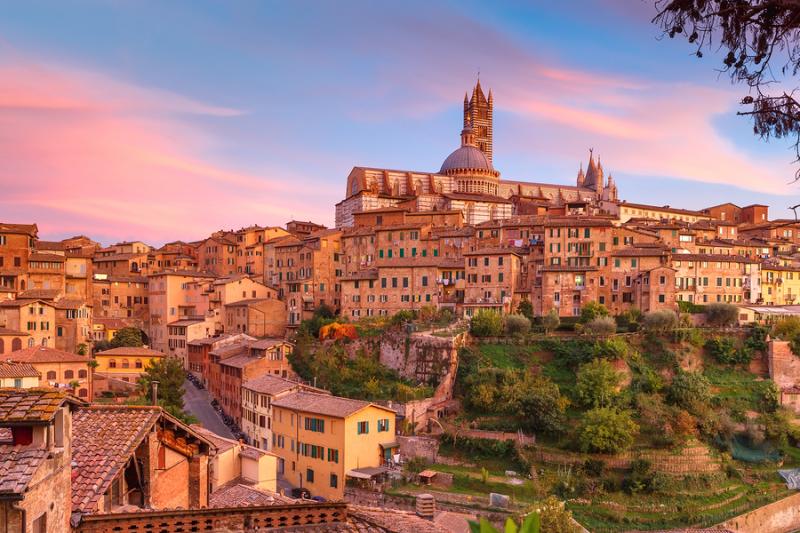Unesco Sites of Italy: Historic Center of Siena
ITA:

“Siena is the embodiment of a medieval city,” writes Unesco, which inscribed it into its World Heritage list in 1995. “The whole city of Siena, built around the Piazza del Campo, was devised as a work of art that blends into the surrounding landscape.” The buildings were designed to fit into the overall planned urban fabric and also to form a whole with the surrounding cultural landscape.
For these reasons, Siena had a major influence on art, architecture and urban planning during the Middle Ages, both in Italy and in Europe.
The historic center is still encircled by the ancient ramparts, built between the 14th and 16th centuries, following the outline of the three hills on which the city was built; the hills were connected by three large roads that intersected in a Y shape in a valley which later became Piazza del Campo. Inside the fortified walls, which measure seven kilometers, tower-houses, palaces, churches and religious structures survive in their original functions, as well as some splendid fountains, the road network and the green spaces related to the urban plan.
Over the centuries, the city has been able to preserve its Gothic appearance acquired between the 12th and 15th centuries, thanks also to the use of the Sienese arch, brought to the city from the East during the Crusades, remaining a predominant architectural element until the Renaissance.
Considering its excellent state of conservation and historical authenticity, Siena is a rare example of a medieval historical city of this size, says Unesco, in part because it was spared from modern industrial development, in part because it remained outside the areas of great national development. The relatively low number of inhabitants, which has remained the same as in medieval times, has helped preserve the city from large-scale urban extensions that could have altered its historical fabric.
“Siena è l'incarnazione di una città medievale”, scrive l’Unesco, che l'ha inserita nel suo elenco Patrimonio Mondiale dell’Umanità nel 1995. “Tutta la città di Siena, costruita intorno a Piazza del Campo, è stata concepita come un'opera d'arte che si fonde con il paesaggio circostante.” Gli edifici sono stati progettati per adattarsi al tessuto urbano e anche per formare un tutt’uno con il paesaggio culturale circostante.
Per questi motivi, Siena ha avuto una grande influenza sull'arte, l'architettura e l'urbanistica durante il Medioevo, sia in Italia che in Europa.
Il centro storico è ancora circondato dagli antichi bastioni, costruiti tra il XIV e il XVI secolo, seguendo il profilo delle tre colline su cui fu costruita la città; le colline furono collegate da tre grandi strade che si intersecavano a forma di Y in una valle che in seguito divenne Piazza del Campo. All'interno delle mura fortificate, che misurano sette chilometri, case-torri, palazzi, chiese e strutture religiose sopravvivono nelle loro funzioni originali, così come alcune splendide fontane, la rete stradale e gli spazi verdi legati al piano urbano.
Nel corso dei secoli, la città ha saputo preservare il suo aspetto gotico acquisito tra il XII e il XV secolo, grazie anche all'uso dell'arco senese, portato in città dall'Est durante le Crociate, rimanendo un elemento architettonico predominante fino al Rinascimento.
Considerando il suo eccellente stato di conservazione e autenticità storica, Siena è un raro esempio di città storica medievale di queste dimensioni, afferma l'Unesco, in parte perché è stata risparmiata dal moderno sviluppo industriale, in parte perché è rimasta al di fuori delle aree di grande sviluppo nazionale. Il numero relativamente basso di abitanti, che è rimasto lo stesso del medioevo, ha contribuito a preservare la città da estensioni urbane su larga scala che avrebbero potuto alterarne il tessuto storico.











